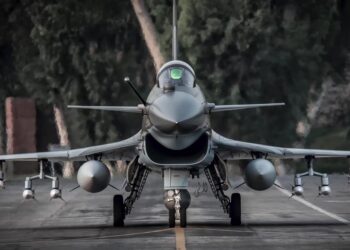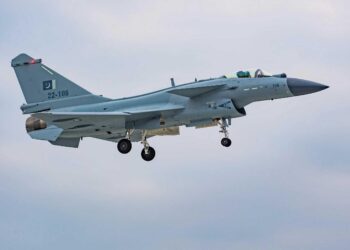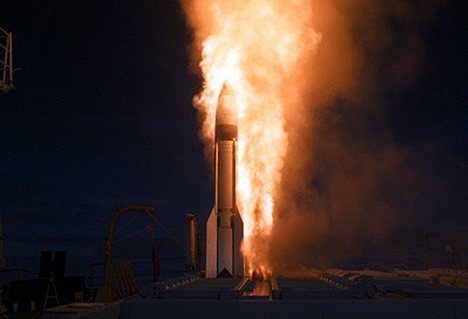Top officers from all of the military services today predicted dire consequences if looming automatic, across-the-board spending cuts are allowed to take effect, and they urged the members of the Senate Armed Services Committee to do all in their power to stop the process.
If unchanged, the process known as sequestration will add $470 billion in defense spending cuts over 10 years beginning March 1.
Army Chief of Staff Gen. Ray Odierno called his service’s fiscal outlook dire and unprecedented, noting that the Budget Control Act mandates $170 billion in Army spending cuts over the next decade. In addition, he said, this year the Army faces a $17 billion to $18 billion shortfall in its operation and maintenance accounts, as well as an additional $6 billion cut to other programs as a result of the continuing resolution and the sequester.
Continuing in this vein will ensure soldiers will not be ready if called on for operations, Odierno told the senators.
“Over the course of my 36-year career, I’ve commanded at every level,” he said. “I know what it takes to prepare this nation’s sons and daughters for war. I know what it takes to grow leaders in our Army. I know what is required to send soldiers into combat. And I’ve seen first-hand the consequences when they are sent unprepared.
“I began my career in a hollow Army,” he continued. “I do not want to end my career in a hollow Army.”
Odierno expressed concern about the uncertain global environment. “We simply don’t know when we will have to deploy soldiers to fight again,” he said. “But history tells us that we will. We owe it to them to ensure they have the proper resources to be ready when needed.”
If sequestration takes effect and funding continues by continuing resolution, the Army will curtail training for 80 percent of ground forces and will cut across all specialties, the general said. The Army already has instituted a civilian hiring freeze and will terminate an estimated 3,100 temporary and term employees.
“We will furlough up to 251,000 civilians for up to 22 days,” Odierno said. “We will cancel third- and fourth-quarter depot maintenance, which will result in the termination of an estimated 5,000 employees … and a significant delay in equipment readiness for six divisions at an estimated $3.36 billion impact to the communities surrounding our depots.”
Sequestration will mean cuts in force structure in the future. For fiscal 2014 and beyond, sequestration will result in the loss of at least an additional 100,000 personnel — soldiers from the active Army, the Army National Guard and the Army Reserve. “Combined with previous cuts, this will result in a total reduction of at least 189,000 personnel from the force, but probably even more than that,” Odierno said. “These reductions will impact every Army base and every installation in the Army.”
The Navy already is delaying deployment of an aircraft carrier and cruiser due to fiscal troubles and anticipates much more if sequestration hits, said Adm. Mark E. Ferguson III, vice chief of naval operations.
“Simply stated, the combined effect of a year-long continuing resolution and sequestration will reduce our Navy’s overseas presence and adversely impact the material readiness and proficiency of our force, thus limiting the president’s options in time of crisis,” Ferguson said. It also could cripple the industrial infrastructure needed to build and maintain naval ships and aircraft, he added.
“The Navy will be unable to execute all the naval force requirements of the combatant commanders,” Ferguson bluntly told the senators.
Sequestration’s immediate impact will be to fleet operations and depot maintenance, the admiral said.
“We anticipate reducing flight operations and steaming days for our deployed forces, canceling deployments, deferring more maintenance on ships and aircraft, suspending most nondeployed operations such as training and certifications, along with other cost-cutting measures,” he said. “We will immediately erode the readiness of the force.”
The Navy also would cut force structure, end strength and investments, Ferguson said.
“We must be mindful of the corrosive effect of this uncertainty on the morale of our people and be vigilant regarding the potential effects of sequestration on the propensity of our force to stay with us and of new recruits to join,” he added.
Ferguson’s sea service partner, Marine Corps Commandant Gen. James F. Amos, told the committee that sequestration would gut the Corps.
“Sequestration — by its magnitude, its timing, and its methodology — will have a devastating impact on readiness, both short-term and long,” he said. “Combined with the effects of the existing continuing resolution, sequestration creates unacceptable risk: risk to our strategy, risk to our forces, risk to our people, and lastly, risk to our nation.”
Amos said he sees this as a lapse in American leadership that would allow old threats to reconstitute and give new threats a chance to grow. “The combined effect of continuing resolution and sequestration will have deleterious effect on the stability of global order, the perceptions of our enemies, and the confidence of our allies,” the general said.
Sequestration is not simply a budget issue, Amos stressed. “The linkage between resources and readiness is immediate and visible,” he said. “The scale and abrupt implementation of sequestration will have devastating impacts on readiness. Sequestration will leave ships in ports, aircraft grounded for want of necessary maintenance and flying hours, units only partially trained and reset after 12 years of continuous combat, and modernization programs canceled.”
By its nature, the Marine Corps is a deployable asset that must be ready all the time, Amos noted. “Under the continuing resolution, I have kept deploying units ready, but only by stripping away the foundations of the long-term readiness of the total force,” he said. “While the short-term adaptations are possible, the enduring effects of some of these decisions put us at an unsustainable tipping point.
“By the end of this year,” he continued, “more than 50 percent of my combat units will be below minimal acceptable levels of readiness for deployment to combat.”
Gen. Mark A. Welsh III, the Air Force chief of staff, told the senators that sequestration will affect every account and program in his service.
“If it occurs, it will significantly undermine your Air Force’s readiness and responsiveness today,” Welsh said. “It will significantly impact the Air Force civilian workforce in the coming months, and its impact on modernization will clearly affect the Air Force’s future capability.”
The furlough of 180,000 civilians would mean more than 31.5 million man-hours of productivity and specialized expertise lost this year, the general said.
“It will result in loss of over 200,000 flying hours,” Welsh added. “While we will protect flying operations in Afghanistan and other contingency areas — nuclear deterrents and initial flight training — roughly two-thirds of our active-duty combat Air Force units will curtail home-station training, beginning in March, and will drop below acceptable readiness levels by mid-May. Most will be completely non-mission capable by July.”











